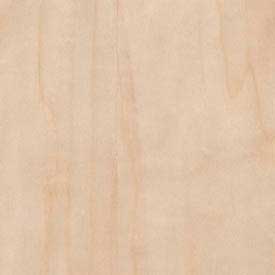Aspen
General Info and Benefits
Aspen - Populus tremuloides or Popple
General Description
• White sapwood blending into the light brown of the heartwood
• Contrast between sap and heartwood is small
• Has a fine uniform texture and is straight-grained
Physical Properties
• The wood is light and soft, with low bending strength and stiffness
• Medium shock resistance
• Has a very low bending classification
• Janka Rating System = 350 (higher Janka rating = harder wood)
Where It Grows
• Commercially in the Northeastern U.S.
• Average tree height is 40 to 60 feet
• Has a short life span: just before reaching full growth, it has a tendency to suffer from decay
• A true poplar and thus has similar characteristics and properties to cottonwood
• Aspens are known for seeding and thriving in places where fires have been
• Regenerates from the root
• Does not need replanting after harvest
Relative Abundance
• Together, aspen, basswood, cottonwood, elm, gum, hackberry, sassafras, sycamore and willow represent 12.5 percent of commercially available U.S. hardwoods.
Did You Know?
• Chopsticks and excelsior (wood wool) are often made of aspen.
General Description
• White sapwood blending into the light brown of the heartwood
• Contrast between sap and heartwood is small
• Has a fine uniform texture and is straight-grained
Physical Properties
• The wood is light and soft, with low bending strength and stiffness
• Medium shock resistance
• Has a very low bending classification
• Janka Rating System = 350 (higher Janka rating = harder wood)
Where It Grows
• Commercially in the Northeastern U.S.
• Average tree height is 40 to 60 feet
• Has a short life span: just before reaching full growth, it has a tendency to suffer from decay
• A true poplar and thus has similar characteristics and properties to cottonwood
• Aspens are known for seeding and thriving in places where fires have been
• Regenerates from the root
• Does not need replanting after harvest
Relative Abundance
• Together, aspen, basswood, cottonwood, elm, gum, hackberry, sassafras, sycamore and willow represent 12.5 percent of commercially available U.S. hardwoods.
Did You Know?
• Chopsticks and excelsior (wood wool) are often made of aspen.
-
 AspenFeaturing a smooth and even grain pattern, Aspen is a white wood with little variation between heartwood and sapwood. It's a good alternative paint grade option to Poplar.
AspenFeaturing a smooth and even grain pattern, Aspen is a white wood with little variation between heartwood and sapwood. It's a good alternative paint grade option to Poplar.